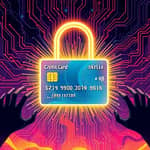
Life’s unexpected challenges often test the strength of our financial safety nets. While an emergency fund is the ideal first line of defense, sometimes savings fall short or remain inaccessible when you need cash most. In those moments, fast access to critical cash can mean the difference between relief and hardship.
Personal loans are unsecured, lump-sum credits extended by banks, credit unions, and online lenders. Unlike credit cards, they provide one-time funding and feature fixed installment monthly payments over a predetermined term. This structure offers predictability and clarity about when you will be debt-free.
Typical personal loan interest rates range from 6% to 10.6% for well-qualified borrowers, significantly lower than the average credit card rate of 17.14% in 2019. Approval timelines vary by lender, with some offering same-day or next-day funding for qualified applicants.
If your savings can’t cover an urgent need or you prefer to keep investments untouched, a personal loan may be a viable alternative. Key scenarios include:
In these situations, a personal loan can provide an immediate cash infusion without emptying your liquidity reserves.
Before borrowing, it’s crucial to compare pros and cons to determine if the loan aligns with your financial goals and repayment capacity.
An established emergency fund offers cost-free access to cash and carries no debt obligations. However, depleting it entirely can leave you vulnerable to subsequent crises. A personal loan, on the other hand, may incur interest but lets you:
The trade-off is clear: immediate liquidity versus the long-term expenses of borrowing.
When considering a personal loan as an emergency fund alternative, follow these best practices to safeguard your financial health:
By evaluating interest rate environment and credit score together, you can secure terms that minimize your overall cost and reduce stress during repayment.
While an emergency fund remains the gold standard for handling unforeseen expenses, a personal loan can serve as a practical backup when savings are insufficient or illiquid. The key is to approach borrowing with discipline and foresight. Compare the cost of credit with the benefits of preserving your savings, then commit to a repayment plan that prevents further financial strain.
Used wisely, personal loans can bridge sudden shortfalls without derailing long-term goals. Remember, the ultimate aim is to strengthen your financial resilience—whether through building a robust emergency fund or responsibly leveraging credit when those reserves run low.
References













